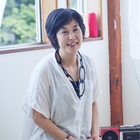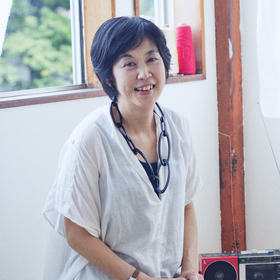Softening the Boundaries
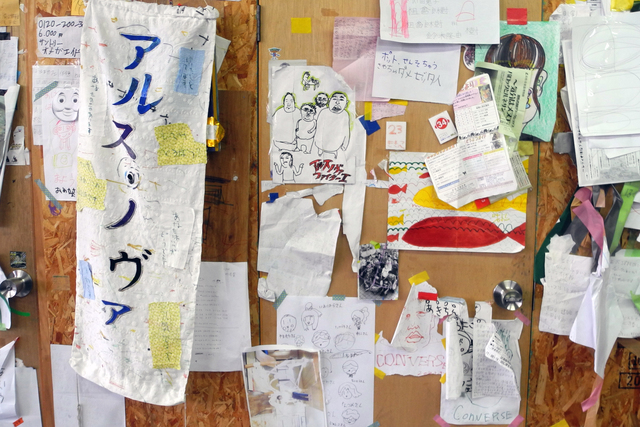
Japan in transition
Despite the fact that the number of children is decreasing in this era of a declining birthrate and an aging population, special classes and special-needs schools for disabled children are increasing every year. Children with developmental disorders that had latently existed in society until now are among those with special needs. Young people aged from 15 to 34 years of age who withdraw from society are increasing by 700,000 people every year and the number of those in part-time or casual employment is increasing by 7% each year. The annual number of people who commit suicide has exceeded 30,000 for 10 consecutive years, and those who consult psychiatrists and are on medication are continuing to increase.
People are under a very high level of stress. Communities are breaking down and as isolation and divisions progress more and more, I feel that tolerance and resilience in society are gradually being lost. People are forced into the same way of working or living and those that do not follow are excluded without mercy. It is a society that claims it accepts diversity and individuality, but in reality it has no tolerance for even little differences.
After experiencing rapid growth, we now have a mature society that is not rising upwards, have experienced two major disasters and still now there is a disparity between the regions that have to endure endless suffering and those that treat this as something that has nothing to do with them. There has not been a war for 70 years but there is a smell of something starting to burn in Japanese society. Everything is in a "transition period" and we are all searching for what we should do and what we want from now on. We are thinking about how to live with some kind of happiness, and this is also a time when we feel confused about the way to go and cannot imagine the future.
The Tokyo Olympics and Paralympic Games will be held in these circumstances.
So what exactly are we looking for here?
Creative Support Let’s and a place to feel comfortable
I set up Creative Support Let's in 2000.
After finishing my master’s course at graduate school, I returned home and started a small construction and environmental design office. After that, marriage and childbirth. Then I gave birth to my second child who had serious disabilities. Life changed completely from there.
I happened to give birth to a child with severe disabilities and through this I lost the relationship with the society that I had been connected to until then. Even if I want to raise my child normally, children with disabilities and their families gradually become marginalized by society.
In order for my family and I to live happily, there was no choice but for me to create a place where we ourselves could feel comfortable. That place was Creative Support Let's.
Ten years after that I set up ars nova, a welfare facility for the disabled. 30 to 40 disabled children and adults attend this place every day. As well as people with severe intellectual disabilities, people with developmental and mental disorders also attend the facility.
Here there is no manual work such as subcontracting that is common in welfare facilities for the disabled. So people with disabilities are also thinking about how to spend their time in their own way. Some people keep doing something for a long time, others walking around or even sleeping. Staff and volunteers are also doing what they want to do along with them, by playing or performing, making something together or writing poetry and dancing.
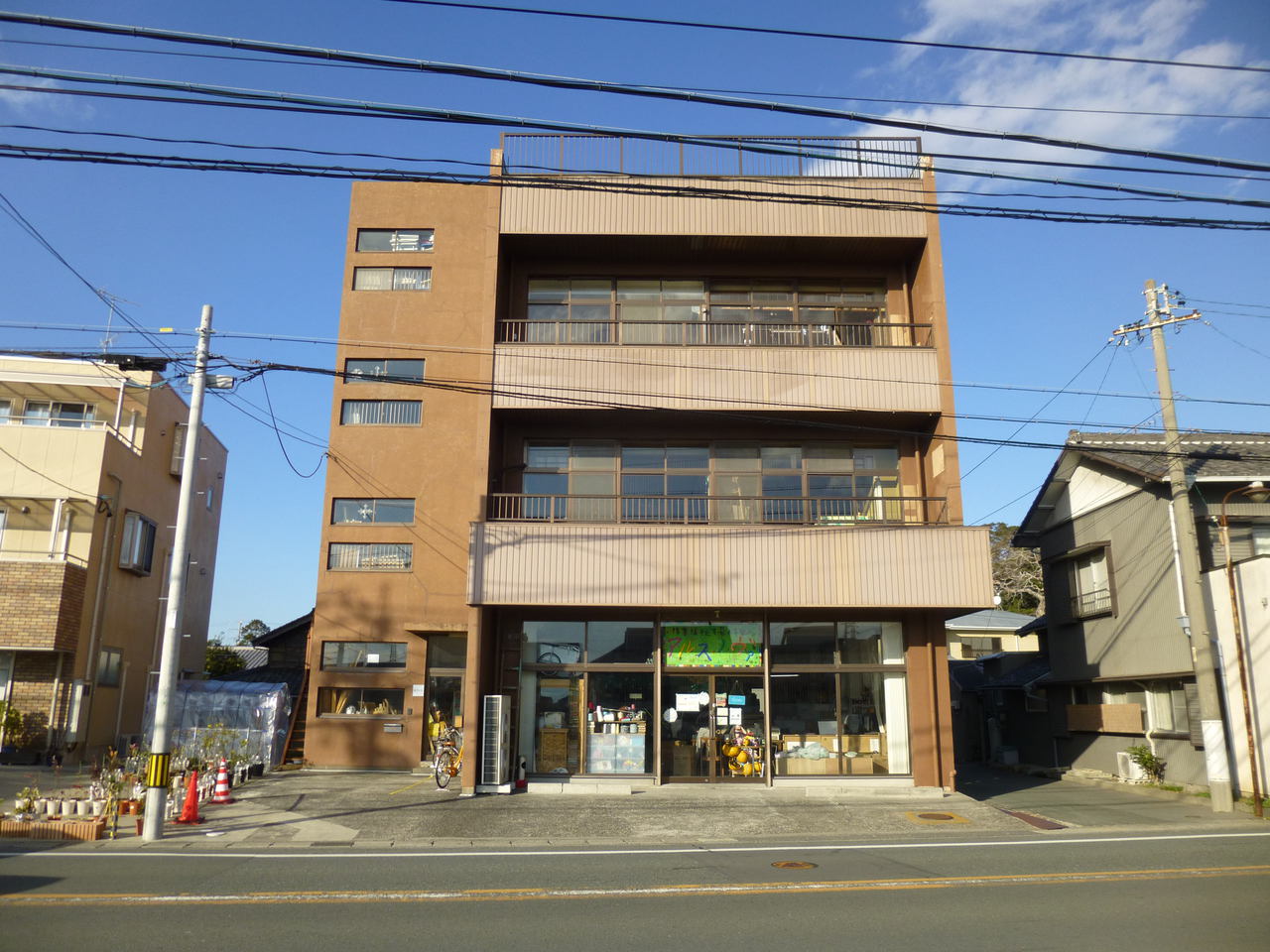
The privately-owned "Takeshi Culture Center's Nova Community Center" is in the same area. It is an old three-story building that has been opened as a place "for everyone to use”.
School refusers or those who tend to withdraw from society are also coming here. There are people with various backgrounds. And they are slowly starting to make a place where they feel comfortable.
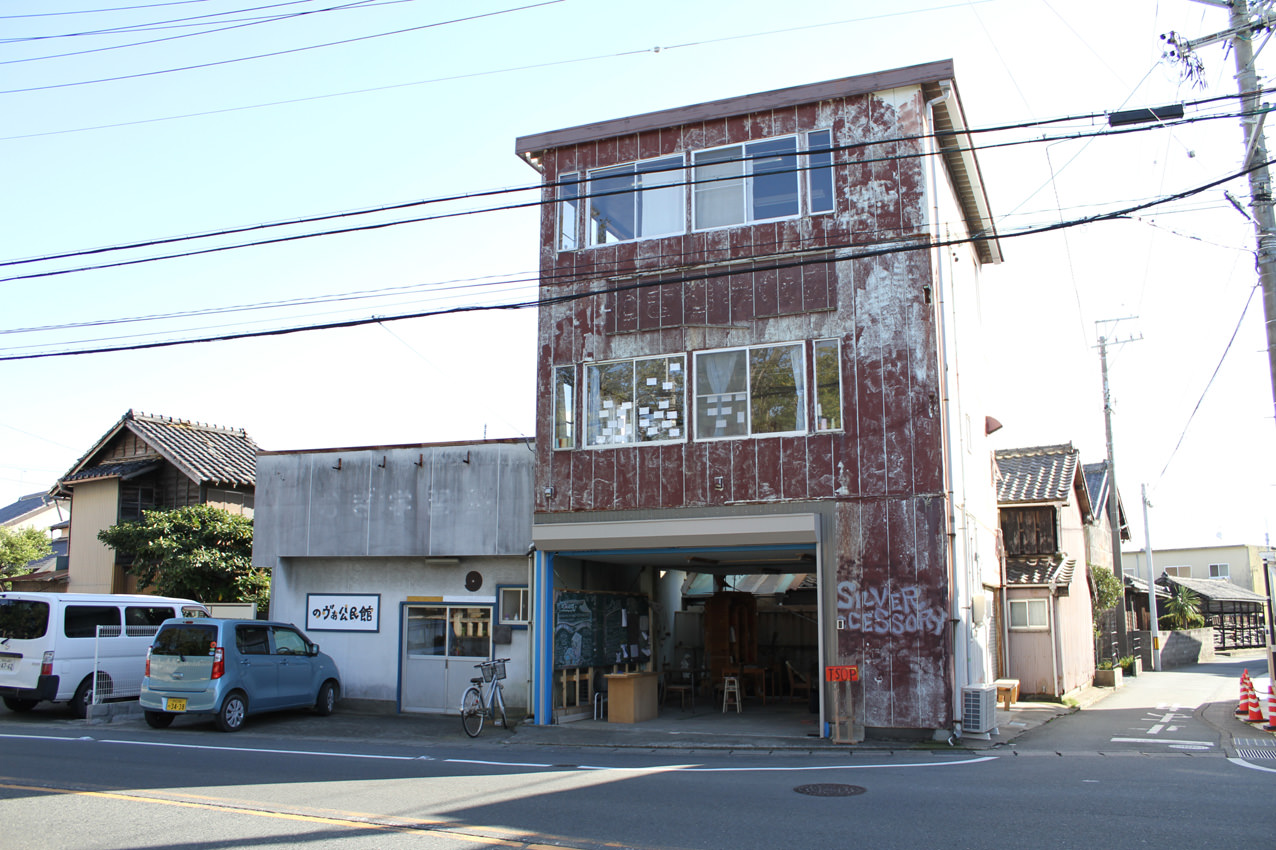
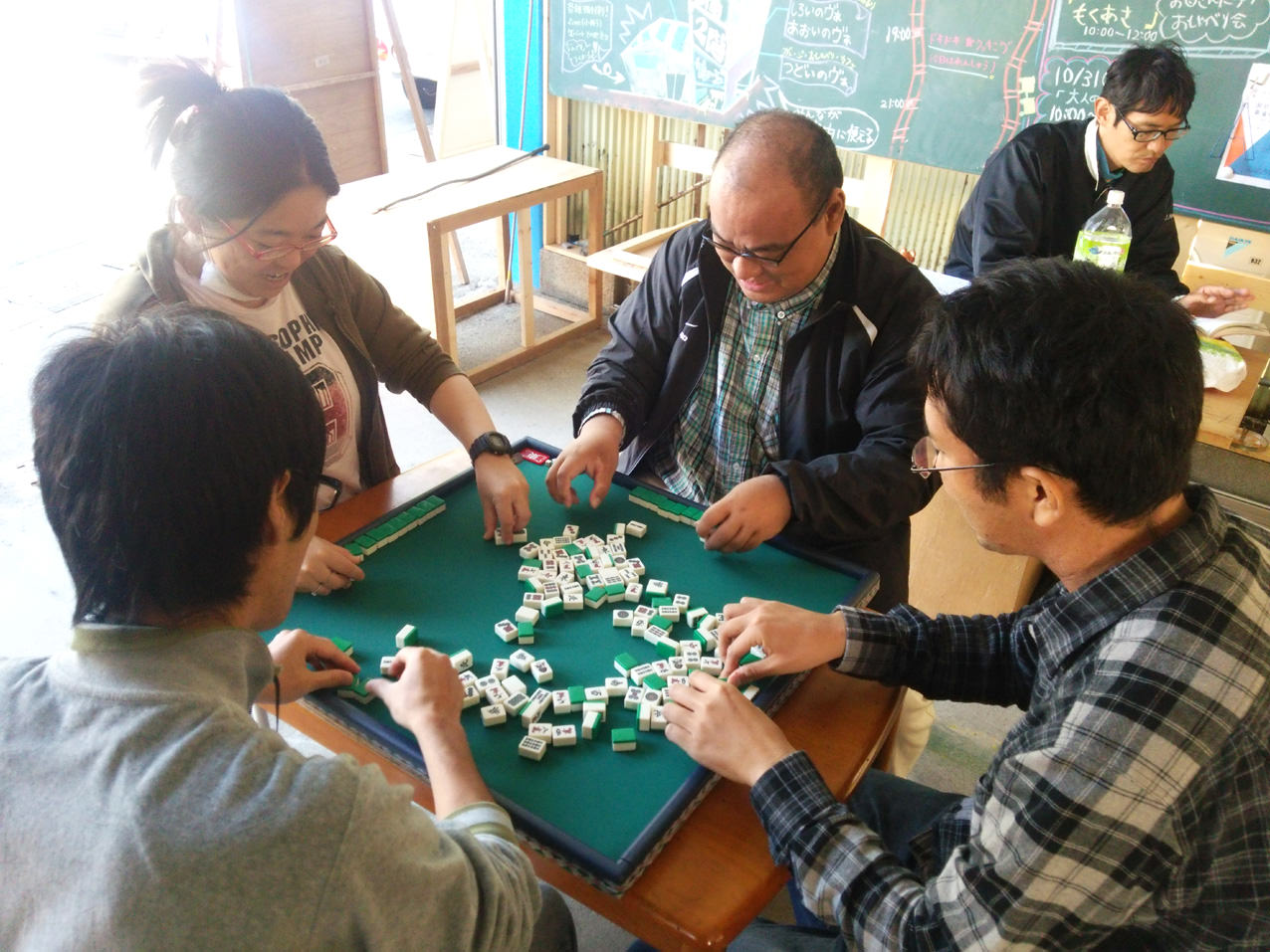
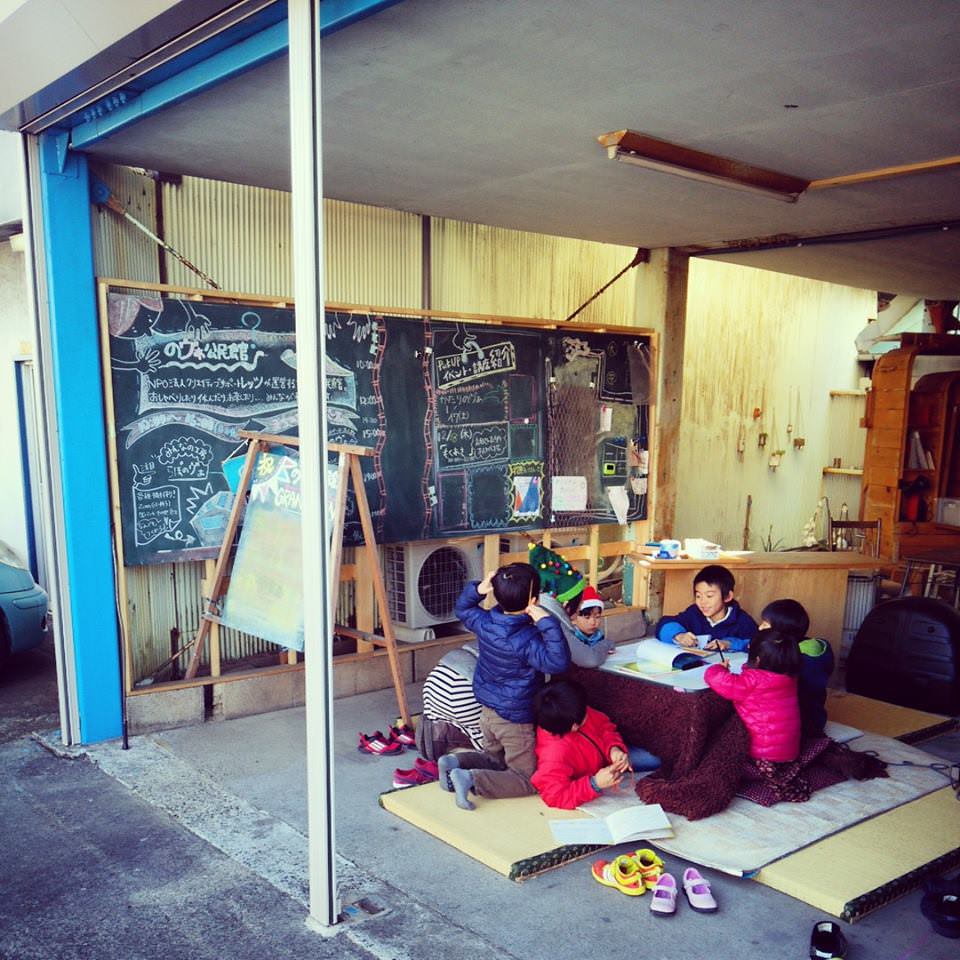
The concept that Takeshi Cultural Center has had since 2008 is "to capture the enthusiasm of individuals as the base of cultural creation." By removing the so-called fixed concepts such as occupation, experience, career history, status, fame, the existence or non-existence of disability, income, housing and family, it is an organization that respects the person's own enthusiastic effort (even if it is a so-called problem behavior connected to a disability) and thinks about "culture" from there. In other words, with its viewpoint of thoroughly respecting the individual and reviewing and rebuilding various rules and norms of society, it is also a movement to make changes through art.
While watching young people coming to Let's, I noticed that there are many people who are worrying “how should I live from now on?” and feel lost. In general, there are probably people thinking about this while going on to further education or getting a job. However, some people are unable to do these things and carry on "thinking" whilst being absent or dropping out of school, leaving their jobs or being without regular employment.
However, society is cold to such people. Viewing them as lazy, society does not allow this inability to grow up and adjust to the adult world to continue. Forcing them to act smartly and become an immediate asset. People are judged with the value of whether they are useful or not. I think that it is a hard era.
I feel that any leeway, any allowance for space has really gone in society. Performance- based principles have spread not only in economics but also in education and welfare. In order to prevent those who have chosen different ways of living and not to follow social norms from suffering through excessive pressure, the only possibility is to change social values.
The activities done by Let's are just small, but we do such things together with people with disabilities. Takeshi Cultural Center, and also the Nova Community Center are doing these activities independently and are making a place to feel comfortable themselves. I think that these places preserve the life force or enable a period of incubation.
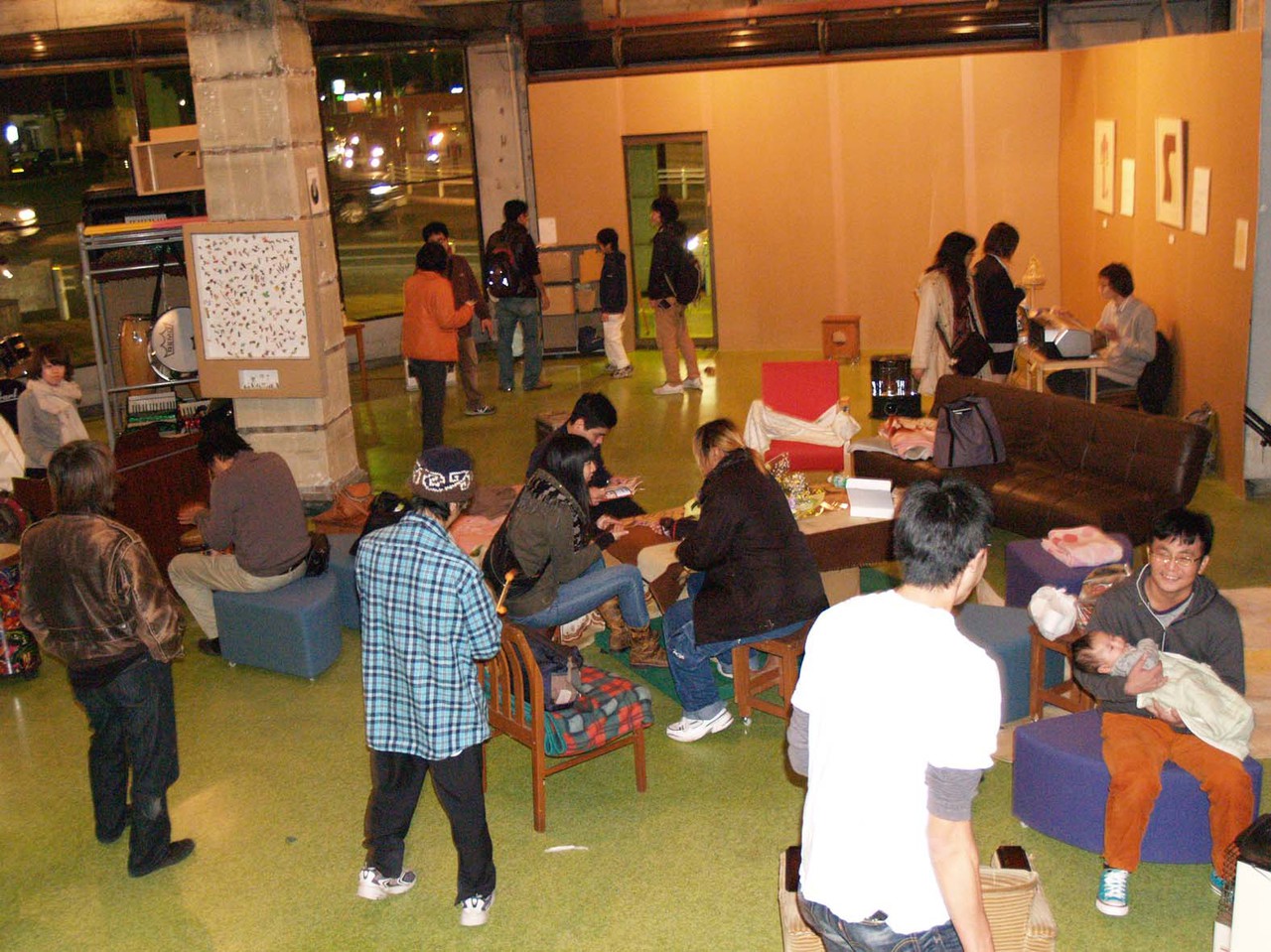
Expressive activities for people with disabilities
Recently, the world of disabled art has been gradually flourishing, as represented by Able Art, and Art Brut.
You could say that the Paralympic Games is a festival celebrated by people with disabilities. Technological developments have enabled even people with disabilities in their hands, feet, ears, and voices to enjoy sports in the same way as non-disabled people and to fully develop their abilities. It is even said that the records in the Paralympic Games in 2020 will probably exceed those of non-disabled people.
Along with that, among the cultural programs that are about to begin in the whole country, the art activities of people with disabilities are attracting attention. In areas such as disability welfare as well as cultural policy, we are starting to focus on the promotion of disabled art across all fields. Various projects will be developed in prefectures nationwide from now on.
Let's have been doing activities for the past 15 years, but until now there had not been any opportunities for disabled art activities to be talked about as much as ordinary cultural projects. From the perspective of people with disabilities, it can be said that this is a golden opportunity.
In the first place, the Olympic Games is a 'festival of ability'. Originally created to be the best stage for people who excel in their physical skills, talents and senses to make a great effort and win. The audience is moved by the wonderfulness of sport and to see people with high aims striving to do their best, sometimes dedicating themselves to overcome their disabilities.
Excellent work, excellent records, better than anyone else. Praise the people who produce these things. However, if the Tokyo Olympic Games and the Paralympic Games are to result in a spread in the number of people jumping to simplistic conclusions such as "people with disabilities who work hard are wonderful" or "even people with disabilities can do it if they work hard", I can only describe this as quite annoying.
In addition, works made by people with disabilities have been attracting attention, and new markets are beginning to be developed. Attention is focused on expressions by people with disabilities who have been regarded as insignificant until now, and it is quite good that the activities that they are doing are popular. However, I have some doubts about works being given a sense of superiority and transformed into economic results.
It is fine that there are people who have a clear feeling that they want money or want to become famous. But I also want people to know that at the same time there are people who do not think like that at all, people with values that are different from ordinary people.
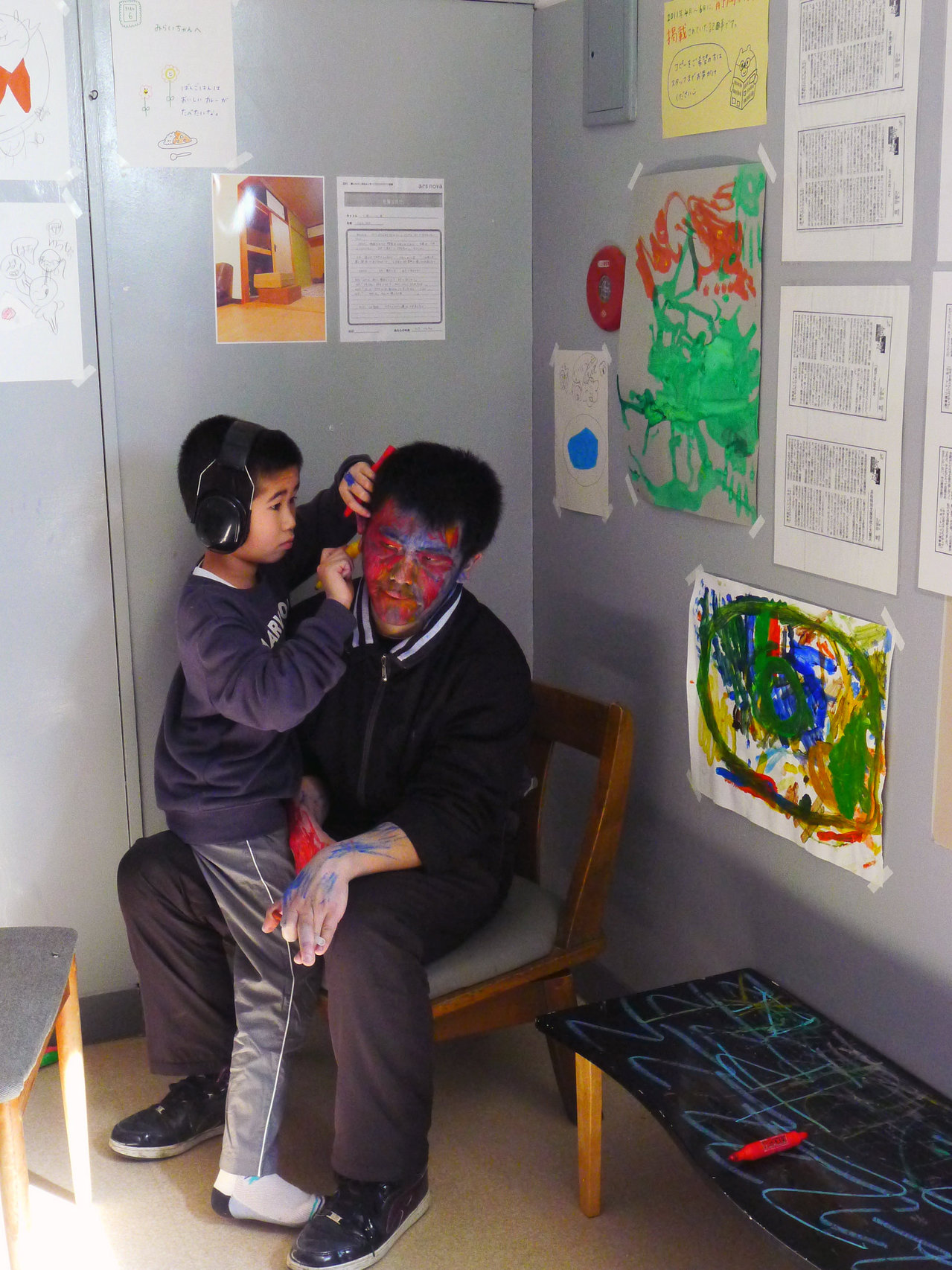
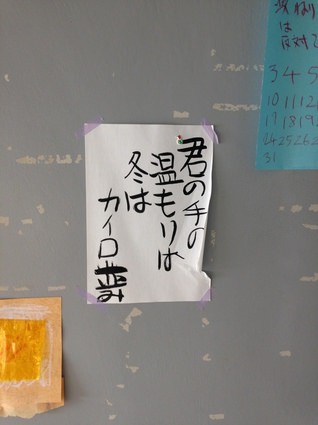
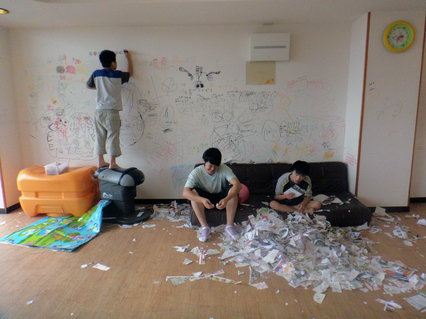
A girl called Mai who goes to ars nova wraps a variety of things with packing tape every day. From a wood carving of a bear, to a daruma doll, to raw food materials; it is not just a single layer of tape but it is layered several times. In one day she can make more than one of these lumps of packing tape and as many as two or three. And suddenly one day, she starts to peel off the packing tape and return it to its original form. And then she starts to stick the packing tape on again. She does these actions repeatedly.
Recently, I entered her work in a nationwide public exhibition related to people with disabilities because I wanted to know what kind of evaluation her packing tape series would receive. It was selected as an excellent winning work and afterwards it even caught the eye of an Italian curator and an exhibition was held in Tokyo.
I just cannot think of her packing tape series as a work of art. For her, I think that sticking the packing tape down is an "everyday" activity. That’s why she peels it off mercilessly and sticks it down again. She is not interested in making works of art but the act itself gives her some kind of sense of relief or control. I feel that it is like something close to eating or excreting.
I mean like the humorous attitude of the mothers when trying to cut their way through simply troublesome acts by their child, or the original relationship that staff and family members create together when struggling for their living right. I feel art in such things.
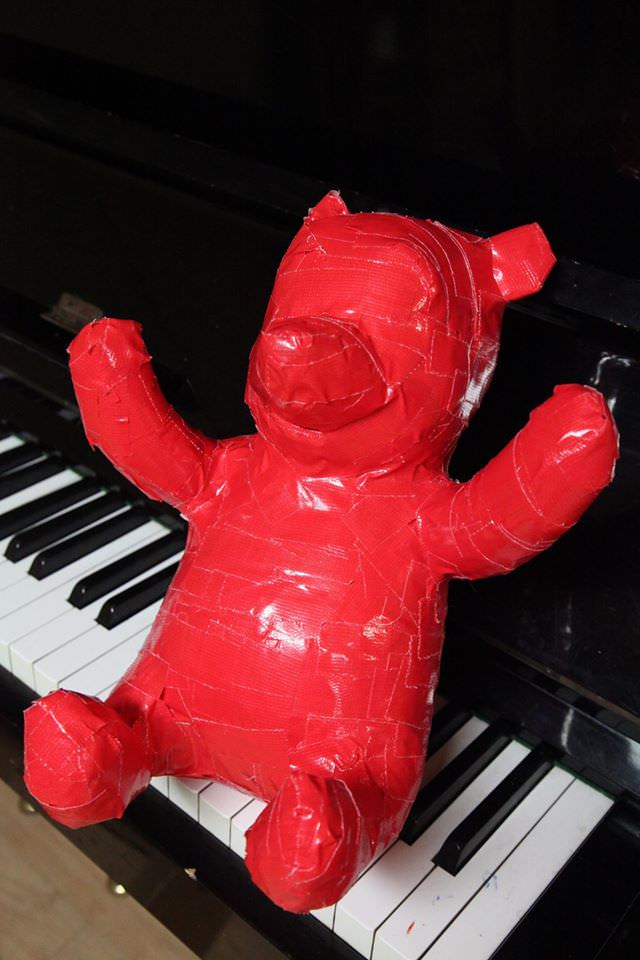
Ryo has a huge body, weighs over 100 kilos and does not move much. He walks up and down the stairs between the first floor and the second floor of ars nova. It takes Ryo about 20 or 30 minutes to come down the stairs that that would take a normal person less than 5 seconds to come down. At one time, the staff made a video of that sight. At that time, we knew that an enriched time that we could hardly imagine was flowing through the way he carried his nearly motionless body.
He came to ars nova from a special-needs school. We got a message from his teacher telling us that Ryo did not obey instructions, could not act in a group, nobody knew what he was interested in and that he was a person with very many problems. However, that is only the story from the viewpoint of the values of us people with normal health. There is a curriculum, a menu list, and in a life where what to do next is already decided, his behavior is problematic and unpleasant. However, when we remove the "time axis" between us and him, we can perceive the rich world inside of him. And you will know how much we are pressed for time and how great our loss is as a result of time.
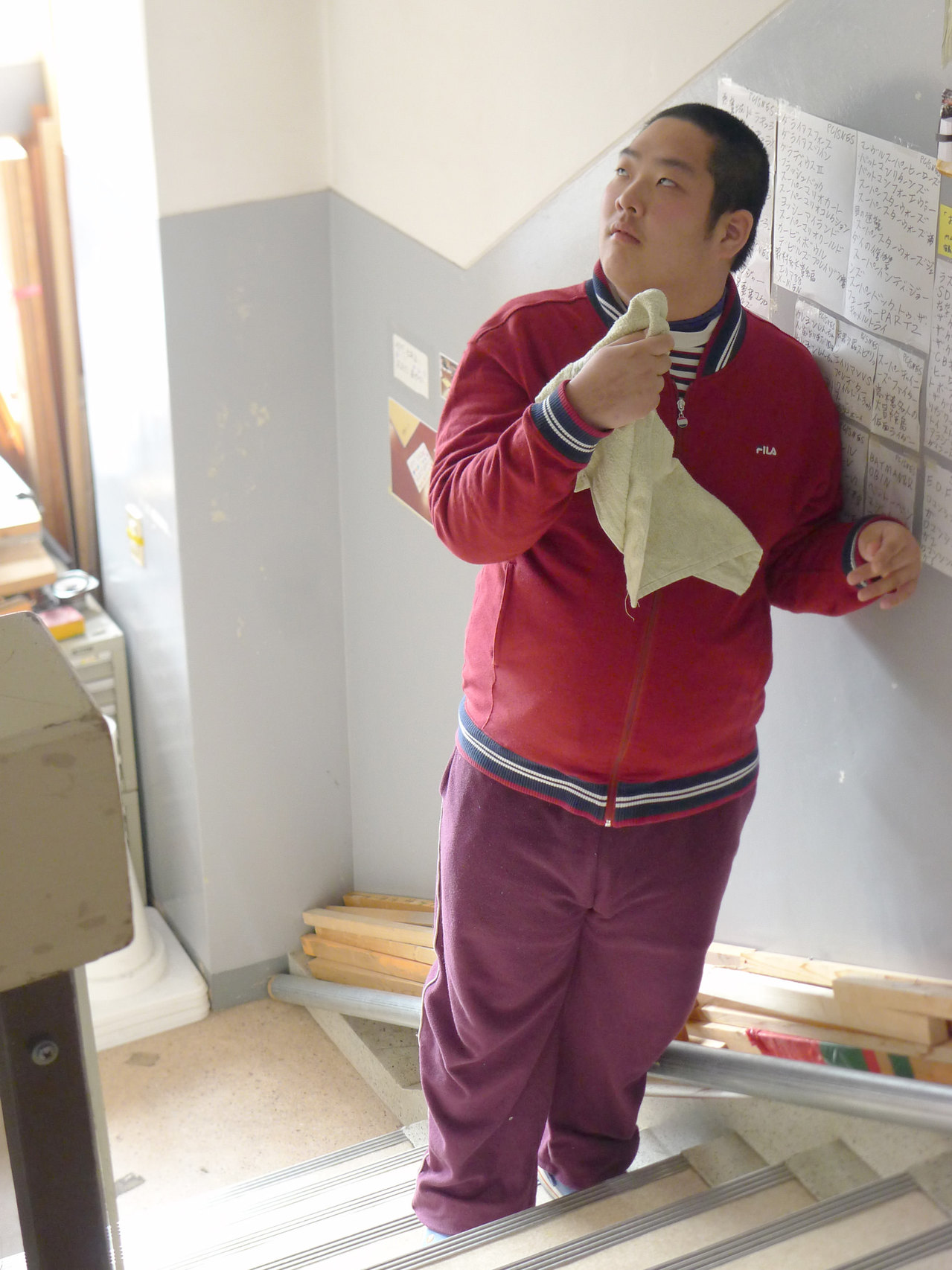
Takeshi puts stones in a container every day and rattles them. That action was regarded as a problem behavior and the aim of schools and institutions was "to stop him doing that and get him to do other things". However, he continued doing it without stopping for one moment. In no time at all, his body changed shape and the range for his actions narrowed further down. At ars nova we regarded this as an "enthusiastically involved act", and rather encouraged it. As a result of this, his problematic behavior was reconsidered as the value of being an action that most closely expressed who he was. No matter where he goes, what he does will not change. So we became aware that the challenge of how to view this was more of a problem on our side.
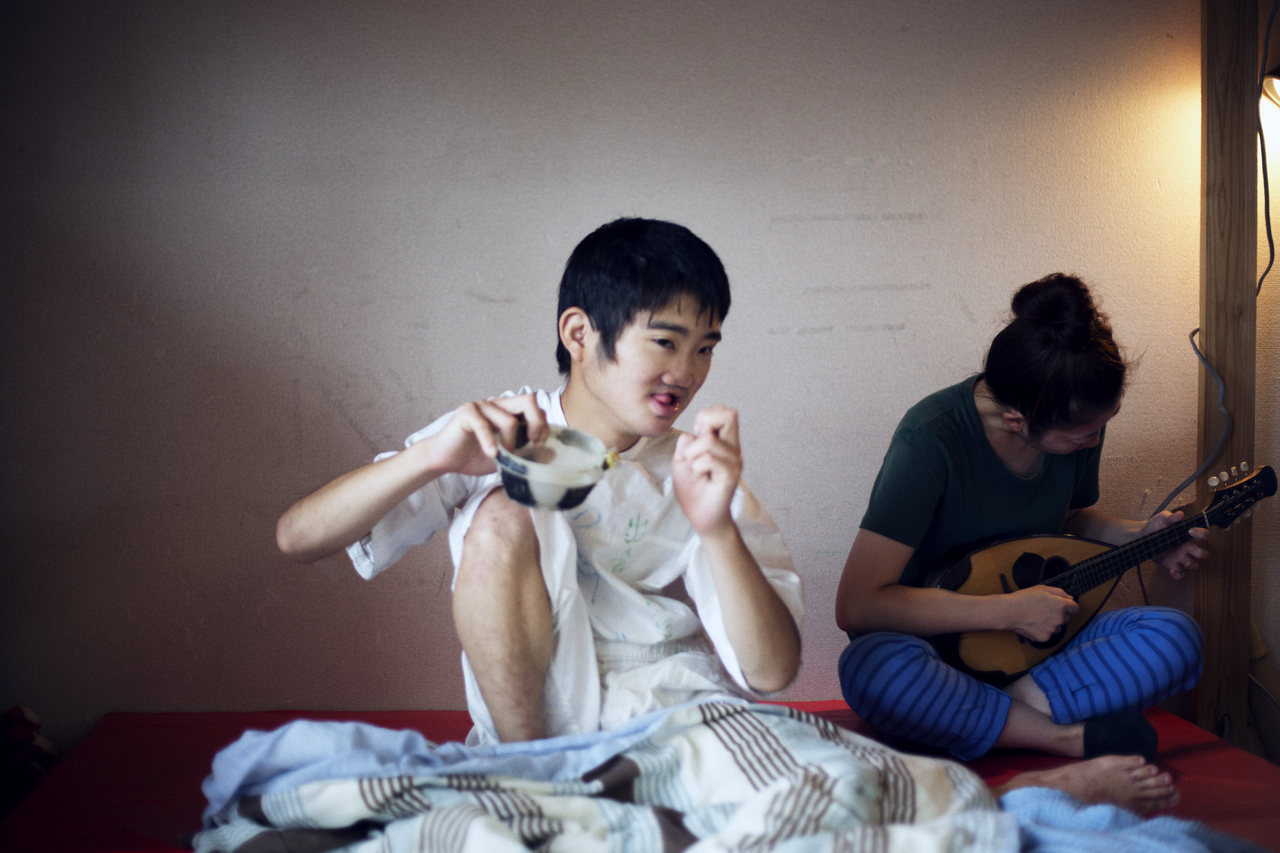
A disorder is not a problem with a disease or ability. It can be said that the problem is how we interpret its existence between us. “People with disabilities” is a general term and does not indicate any person is particular. As long as we talk in general terms, realities and other things do not come to light.
"I" and "you", or "he" and "society". When we consider the concrete relationships between them, the work on how to create these relationships begins. While interacting in various ways, we will enrich our creativity and create original stories in the meantime. I think that this is art.
Limitations of binary conflicts → softening the boundaries
Non-disabled versus disabled, can do versus cannot do, superior versus inferior. Whether he is white or black, whether she is right or wrong, whether he works hard or not ...
The more boundaries are clarified in such a way, the harder it is for a person to live. We have excluded the weak ones, the ones we can’t understand and the unsettled ones that can be found between the boundaries. It is now time for us to try and soften the boundaries. And hints on how to obtain this result can be found at the disability welfare sites.
What legacy will the Olympics leave?
I think the expression that summarizes Japanese culture policy is "leisure activities". Culture policy for any local organizations has been easily cut off, unlike policies directly linked to living such as welfare, economics, construction and education. However, in the present age where society itself has problems and it has become impossible to solve them with money, there is no better way to "try and do something" other than culture anyway.
After the war, disability welfare has gone past the fight against discrimination and prejudice, and as human beings we have regained a kind of acceptable life. In particular, various efforts are being made to help people with intellectual disabilities who have values that are overwhelmingly different from usual to blend into society, but effective means have not been developed well.
Under such circumstances, I think that "art" is there as a way to change or reconsider the values of society, or to shake it up.
Culture alone cannot exert so much power. However, it seems to me that various changes will take place as a result of the existence of social systems that are a mere facade, the emotions of those who cannot keep up, and culture intervening in such places.
This is not an ability to dramatically solve the problem in front of you, but I think it is the ability to develop “the strength to live” with a power "to calm and heal people's feelings" and "to live each day as it comes".
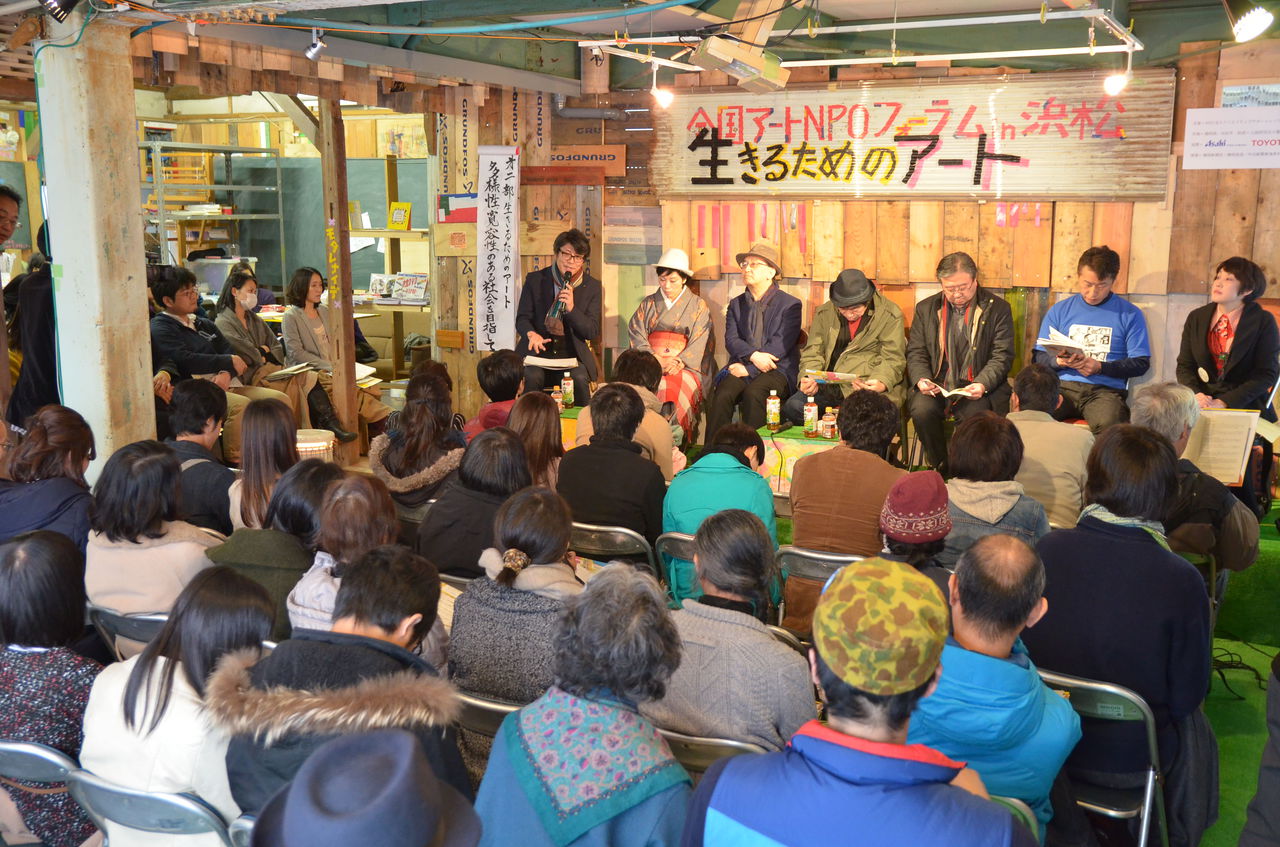
Looking at the current situation in the Olympic cultural program planning, I have some doubts in my mind about the way an approach only from the cultural side stands out. How interested are people in this other than those involved in culture? Even if a cultural project creates unprecedented excitement, it eventually ends with a fireworks display. Suddenly artists appear in the area, at the site, and they start to make something, but no dramatic changes take place. Rather, it may result in a deeper impression of them as “outsiders”.
Rather than that, I would like to see artists or artistic people become involved as personnel working in such areas as education, medical care, welfare, the environment, administration and gradually take action from the inside.
When trying to solve problems in the field by "artistic methods", things happen that had never even been thought of before. By doing so, we will also be able to communicate to ordinary people in the field who did not think like that before. By doing this, I think that various structures in society will change.
I hope that the Olympic legacy will be a softening of each field and a blurring of the boundaries between each field. And human resources will definitely evolve and these developments will persist in the future.
There are five more years until 2020. I really want everyone involved in culture and the arts to think about these issues.
And this is where I would like to see public assistance given to.
(Aug 24, 2015)

